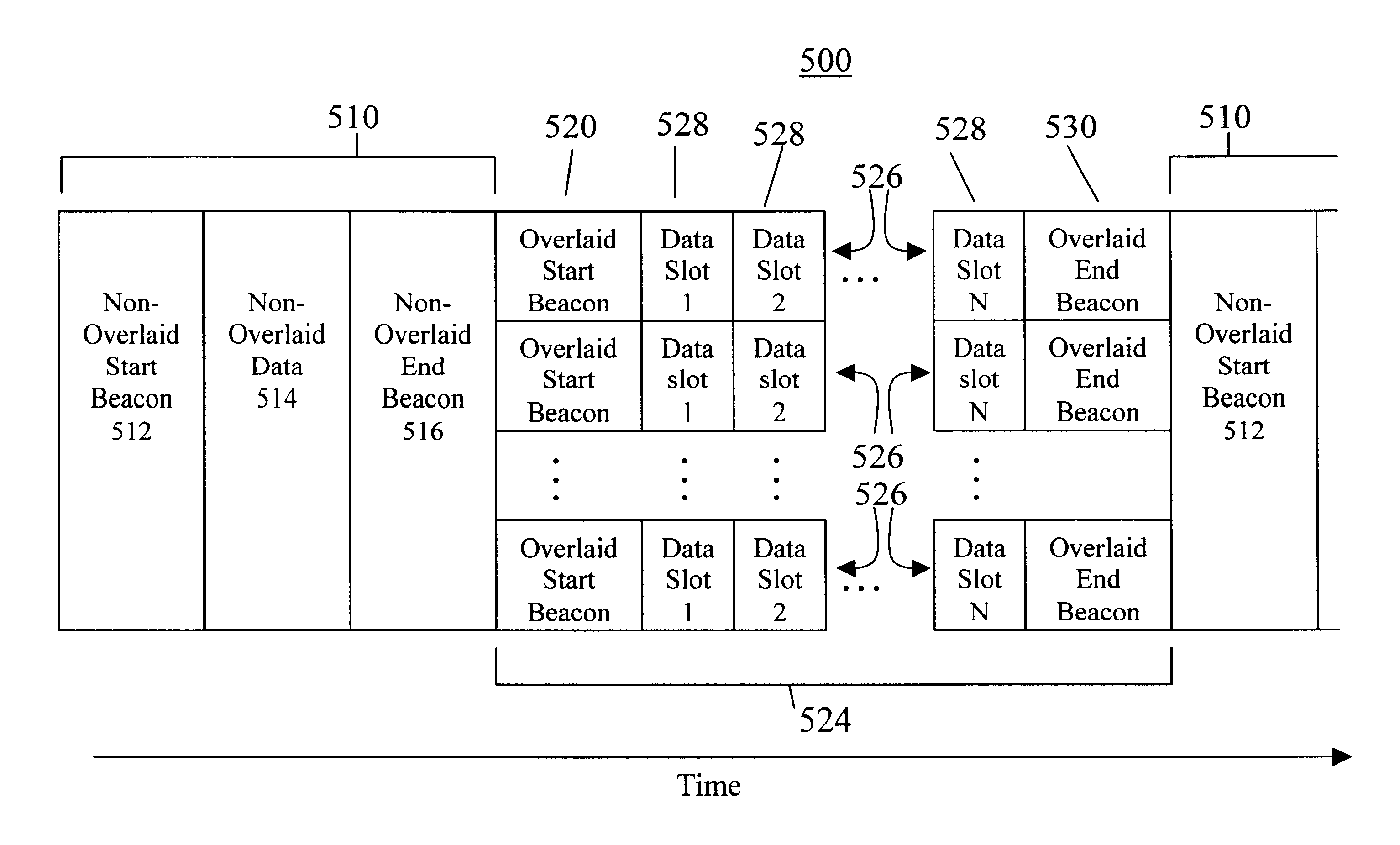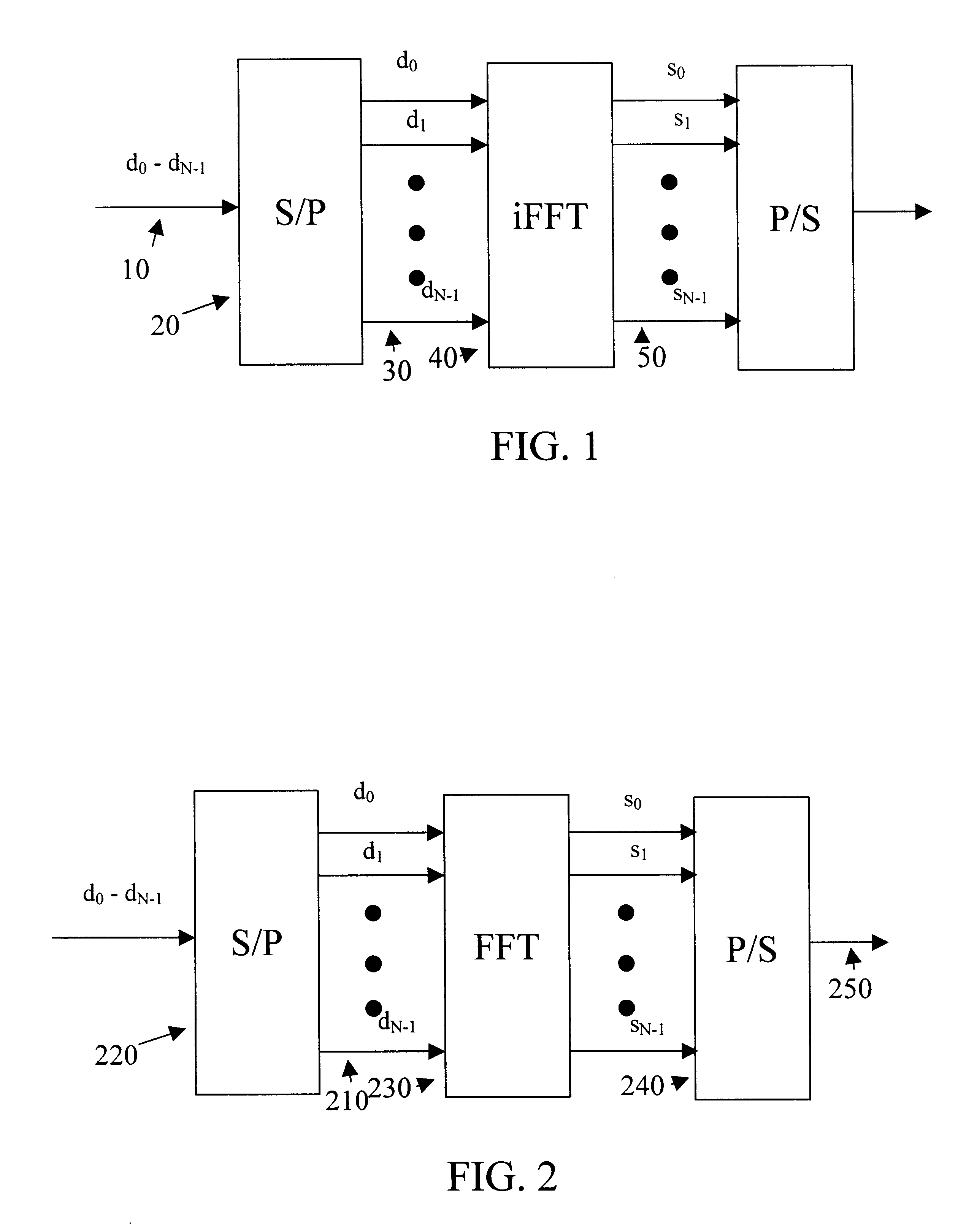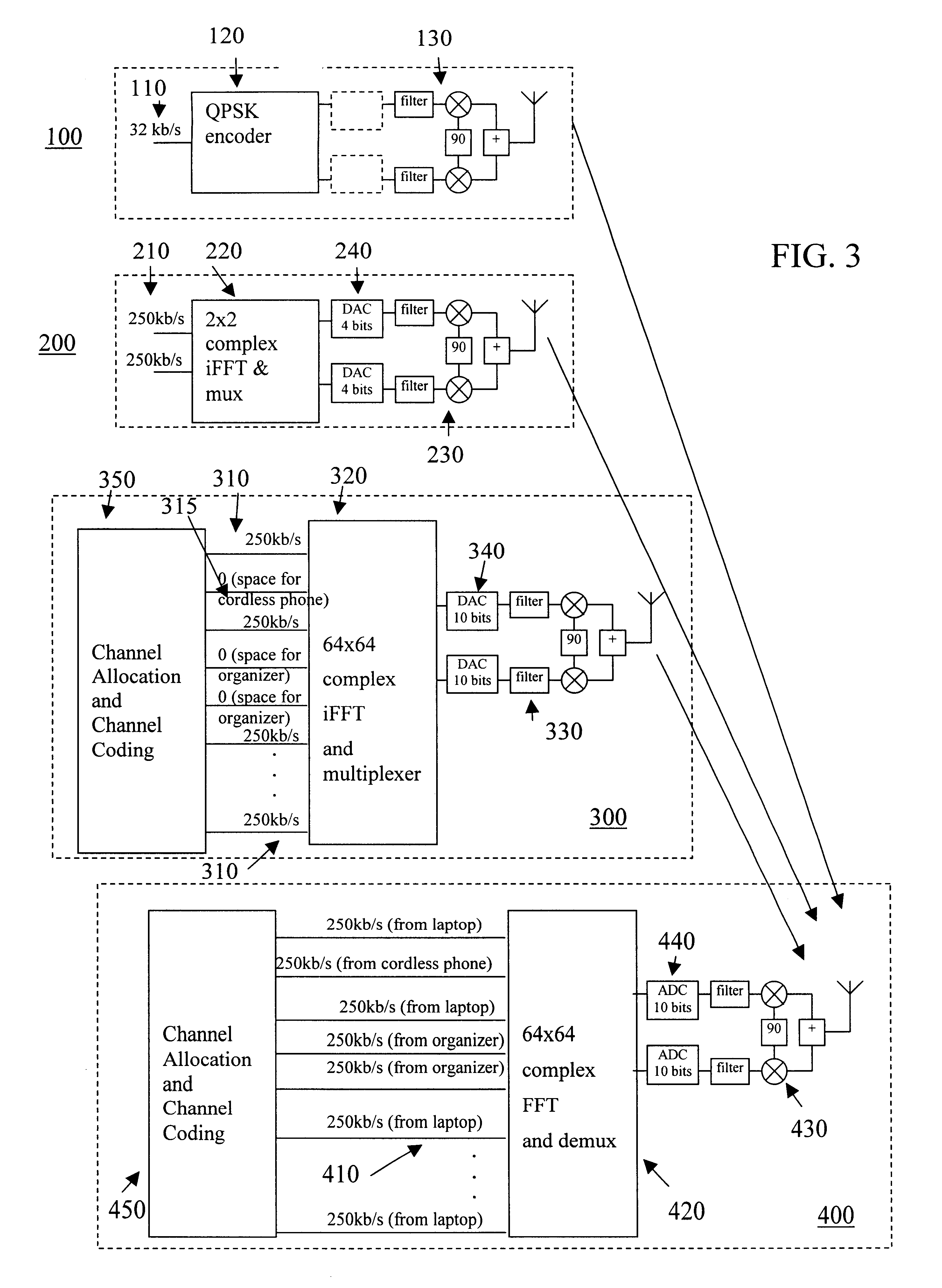Protocols for scalable communication system using overland signals and multi-carrier frequency communication
a communication system and multi-carrier technology, applied in the field of communication systems and networks, can solve the problems of low data rate, inability to exploit the economies inherent in low data rate processing, and limited flexibility and ease of us
- Summary
- Abstract
- Description
- Claims
- Application Information
AI Technical Summary
Problems solved by technology
Method used
Image
Examples
Embodiment Construction
FIG. 3 shows a diagram in which a cordless phone 100, an organizer 200, and a laptop computer 300 are simultaneously communicating with a base station 400. Here, the cordless phone 100 receives or generates a data stream 110 representative of, e.g., 32 kb / s audio information. This data is encoded by a relatively simple quadrature phase shift keying (QPSK) encoder 120 and processed by filtering and modulation circuitry 130 as is known in the art. Due to the low data rate of the phone 100, the QPSK encoder 120 can be used in place of a more complicated IFFT processor as is conventionally used in OFDM systems. Further, use of the QPSK encoder 120 permits elimination of the digital to analog converters (DACs) normally used to render the IFFT product in an analog form suitable for filtering and transmission.
The organizer 200, on the other hand, is a device requiring a moderate data communication rate and, although it requires more complicated circuitry than the cordless phone 100, can st...
PUM
 Login to View More
Login to View More Abstract
Description
Claims
Application Information
 Login to View More
Login to View More - R&D
- Intellectual Property
- Life Sciences
- Materials
- Tech Scout
- Unparalleled Data Quality
- Higher Quality Content
- 60% Fewer Hallucinations
Browse by: Latest US Patents, China's latest patents, Technical Efficacy Thesaurus, Application Domain, Technology Topic, Popular Technical Reports.
© 2025 PatSnap. All rights reserved.Legal|Privacy policy|Modern Slavery Act Transparency Statement|Sitemap|About US| Contact US: help@patsnap.com



